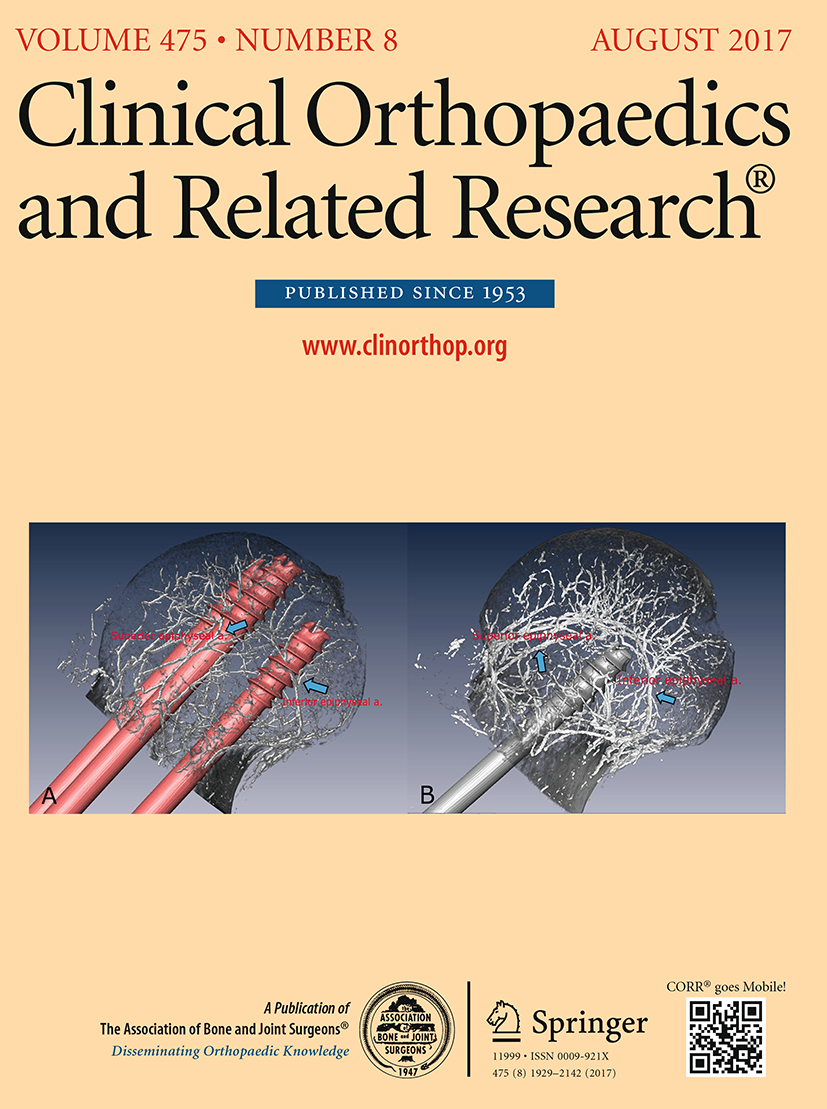
Antibiotic use in low-velocity gunshot-induced fractures remains inconclusive

Antibiotic use in low-velocity gunshot-induced fractures remains inconclusive
Antibiotics in the treatment of low-velocity gunshot-induced fractures: a systematic literature review
Clin Orthop Relat Res. 2013 Dec;471(12):3937-44. doi: 10.1007/s11999-013-2884-zSynopsis
33 studies (2 of which were RCTs) reporting infection rates in patients suffering from a gunshot-induced fracture were included in this review. The purposes of this review were to examine the effect of antibiotics, additional gram-negative coverage, as well as the duration and method of antibiotic administration on infection rates. Results indicated that for fractures treated non-operatively, those treated with antibiotics resulted in a significantly lower infection rate, compared to those without antibiotic treatment. However, when only higher-quality studies were considered, this finding lost its significance. It remains uncertain whether this insignificance was, in fact, due to the difference in the methodological quality of the studies, or a lack of power when only higher-quality studies were assessed. Furthermore, duration of antibiotic administration and additional gram-negative coverage did not have a significant effect on infection rates for fractures treated either operatively or non-operatively.
Were the search methods used to find evidence (original research) on the primary question or questions stated?
Was the search for evidence reasonably comprehensive?
Were the criteria used for deciding which studies to include in the overview reported?
Was the bias in the selection of studies avoided?
Were the criteria used for assessing the validity of the included studies reported?
Was the validity of all of the studies referred to in the text assessed with use of appropriate criteria (either in selecting the studies for inclusion or in analyzing the studies that were cited)?
Were the methods used to combine the findings of the relevant studies (to reach a conclusion) reported?
Were the findings of the relevant studies combined appropriately relative to the primary question that the overview addresses?
Were the conclusions made by the author or authors supported by the data and or analysis reported in the overview?
How would you rate the scientific quality of this evidence?
Yes = 1
Uncertain = 0.5
Not Relevant = 0
No = 0
The Reporting Criteria Assessment evaluates the transparency with which authors report the methodological and trial characteristics of the trial within the publication. The assessment is divided into five categories which are presented below.
4/4
Introduction
2/4
Accessing Data
4/4
Analysing Data
2/4
Results
3/4
Discussion
Detsky AS, Naylor CD, O'Rourke K, McGeer AJ, L'Abbé KA. J Clin Epidemiol. 1992;45:255-65
The Fragility Index is a tool that aids in the interpretation of significant findings, providing a measure of strength for a result. The Fragility Index represents the number of consecutive events that need to be added to a dichotomous outcome to make the finding no longer significant. A small number represents a weaker finding and a large number represents a stronger finding.
Why was this study needed now?
Antibiotic treatment for gunshot trauma is controversial, especially when the injury involves a fracture not requiring fixation. Previous studies have found conflicting results regarding the necessity of additional gram-negative coverage, as well as the manner in which the antibiotic is administered. In addition, the optimal type of antibiotic and the duration of administration remains unknown. This study was needed to provide insight as to (1) the necessity of antibiotics in the treatment of these fractures, (2) the necessity of additional gram-negative coverage, (3) the duration of antibiotic administration and (4) the optimal administration route.
What was the principal research question?
(1) Is antibiotic treatment of gunshot trauma (involving fractures not requiring fixation) necessary? (2) Is additional gram-negative coverage necessary in the treatment of these fractures? (3) What is the optimal duration and administration route of the antibiotic used in this treatment?
What were the important findings?
- Including all studies reporting infection rates in fractures treated non-operatively (17 studies; 937 fractures), there was a significant difference in infection rates for fractures treated with antibiotics (2.4%) compared to those not treated with antibiotics (6.7%) (p=0.031). When only the relevant higher-quality studies were assessed (9 studies; 574 fractures), this difference was not found to be significant (antibiotic treatment: 1.7%; non-antibiotic treatment: 5.1%; p=0.17).
- Including all 10 relevant studies reporting infection rates with or without the additional gram-negative coverage in fractures treated non-operatively, no significant difference was found between groups (p=0.24). A similar result was obtained when only the relevant higher-quality studies (7 studies; 404 fractures) were assessed (1.7% for gram-positive and -negative coverage; 2.8% for gram-positive coverage only; p=0.22).
- For fractures requiring surgical repair, there was no significant difference in infection rates with or without the additional gram-negative coverage, neither when all relevant studies were included (p=0.20), nor when only 11 higher-quality studies were included (p=0.19).
- In 7 higher-quality studies (404 fractures), for fractures treated non-operatively, no significant differences in infection rates were found when patients were treated with antibiotics for 1-2 days (2.1%), 3 days (1.6%) or more than 3 days (3.3%) (p>0.70). Similar results were obtained when all 10 relevant studies were included (p=0.42).
- In 11 higher-quality studies (240 fractures), for fixated fractures, no significant differences in infection rates were found when patients were treated with antibiotics for 1-2 days (1.7%), 3 days (2.7%) or more than 3 days (6.3%) (p=0.45). Similar results were obtained when all 13 relevant studies were included (p=0.15).
- In 7 higher-quality studies (485 fractures), for fractures treated non-operatively, no significant differences in infection rates were found when patients were administered antibiotics intravenously (1.4%) or orally (2.2%) (p=0.69). Similar results were obtained when all 10 relevant studies were included (p=1.00).
- In all relevant studies, fractures requiring fixation were always treated with antibiotics and these antibiotics were all administered intravenously, therefore analyses examining these relationships could not be performed for this population.
What should I remember most?
For fractures resulting from gunshots and treated non-operatively, those treated with antibiotics resulted in a significantly lower infection rate, compared to those without antibiotic treatment. However, when only higher-quality studies were considered, this finding lost its significance. It remains uncertain whether this insignificance was, in fact, due to the difference in the methodological quality of the studies, or a lack of power when only higher-quality studies were assessed. Also for fractures treated non-operatively, no significant difference was found in infection rates whether the antibiotic was administered intravenously or orally. Furthermore, duration of antibiotic administration and additional gram-negative coverage did not have a significant effect on infection rates for fractures treated both operatively and non-operatively.
How will this affect the care of my patients?
Results from this systematic review suggest that, for patients suffering from a gunshot wound including a non-surgically-treated fracture, the use of antibiotics and additional gram-negative coverage is not necessary to decrease the incidence of infection. Furthermore, the use of additional gram-negative coverage was found to be unnecessary in decreasing the incidence of infection in surgically-treated fractures. This finding, however, needs to be interpreted with caution, as the majority of the studies included were observational studies. Furthermore, there is a possibility that the number of fractures included in the higher-quality studies resulted in insufficient power to detect a difference. Additional high-quality randomized controlled trials on this topic are needed to provide a more conclusive answer to the numerous research questions posed by the authors.
Learn about our AI Driven
High Impact Search Feature
Our AI driven High Impact metric calculates the impact an article will have by considering both the publishing journal and the content of the article itself. Built using the latest advances in natural language processing, OE High Impact predicts an article’s future number of citations better than impact factor alone.
Continue



 LOGIN
LOGIN

Join the Conversation
Please Login or Join to leave comments.